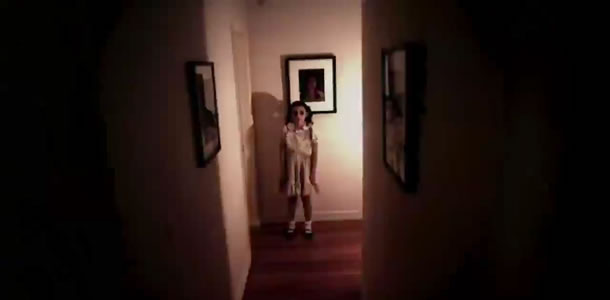Culture
The Bloody Truth: “V/H/S/2”

Every week, Calhoun Kersten looks deeper into the endless catalog of horror cinema in The Bloody Truth.
When does a horror movie outlive its gimmick? More importantly, do filmmakers ever seem to know when to say “when” if a franchise is making money? These are the types of questions I can’t help but ask myself as moviegoers are delivered sequel after sequel, and reboots or remakes by the dozen. That’s why it seemed like a breath of fresh air when SXSW started kicking up some buzz about a horror anthology called V/H/S. Not really a big performer at the box office, especially considering its digital debut before its theatrical release, V/H/S was far from my favorite horror film of 2012. Still, I couldn’t help but respect the novel approach to distribution and the resurgence of the anthology horror film. Though admittedly a failed experiment in horror filmmaking, I still admired the hell out of Magnet Releasing for giving it a go.
Then V/H/S/2 was announced. The pattern became clear. Whether we wanted it or not, it looked like the beginnings of another horror film dynasty. At least with an anthology franchise, each film breathes new life into the series, with no real sense of connection. Didn’t like the alien abduction stuff from the first one? There’s a good chance you won’t have to put up with the same nonsense in the next film, because they might not use the same directors. (Okay, that’s a bad example, because both V/H/S and V/H/S/2 feature some truly abysmal alien storylines.) Still, the fact remains that franchises like this aren’t bogged down with the same conventions as other horror franchises. You don’t have to find yet another way to bring Jason Voorhees back to life because there’s no need to feature the same characters from film to film. That being said, V/H/S/2 does have at least one characteristic to live up to with each entry in the series.
Found footage.
Now, I’m not exactly a revolutionary or great voice of dissent when I say that I’m over found footage. There have been people that complained of motion sickness from day one. Found footage movies don’t make me sick, by any means. Well, not motion sick at least. No, it’s just one of those gimmicks that has long lost what little charm it held in the first place. In fact, if anything, the found footage craze is what kills V/H/S/2.
It’s weird to me, because V/H/S/2 did so many things right in terms of distribution. The found footage phenomenon, at least from my personal perspective, was meant to be a home-viewing experience. You don’t have the distraction of other moviegoers and their reactions to the events onscreen. More than that, found footage, the first-person experience as a whole, makes the movie almost uncomfortably personal. Naturally, what better way to watch something unbearably personal than in your own home? Really, everything about the release of V/H/S/2 was handled beautifully in my mind.
The fundamental problem is with the story world itself. In all the excitement over finding a new (and cheap) way to make horror films, Hollywood seems to have forgotten that there needs to be a reason for the found footage formula. The first Paranormal Activity cited security reasons. Likewise, the first full story in V/H/S/2, “Phase 1 Clinical Trials,” has a purpose for the storytelling device or crutch, whichever you prefer to call the whole found footage thing. As the stories progress, the reason behind the format begins to fade. The second story, “A Ride in the Park,” features a guy riding with a camera attached to his helmet. I mean, I’m no Lance Armstrong or even much of a bicycle enthusiast, but is that a thing? Do people ride around with cameras mounted on helmets? If so, why?
Eventually, the same gimmick that sold the first V/H/S becomes a hindrance for the second film in the franchise. The third story features so many camera changes that I found myself missing key elements of the story because I was trying to remember if that particular character had even had a camera in the first place. The camera is supposed to provide a personal insight into the story, but when the camera work overwhelms the story itself, either you need a new cinematographer or you were working with a pretty weak story in the first place.
There are plenty of other issues with V/H/S/2; a myriad of moments where you find yourself wanting to do the typical ‘yell at the screen’ moment in horror movie viewing or the issue of not having the budget to pull off the story told. Nevertheless, these lapses are annoyances, but ultimately forgivable. V/H/S/2’s use of found footage, in an attempt to make the terror more intimate, falters when the filmmakers frontload the gimmick. Instead of personalizing the paranormal, V/H/S/2 distracts with its insistence on format.